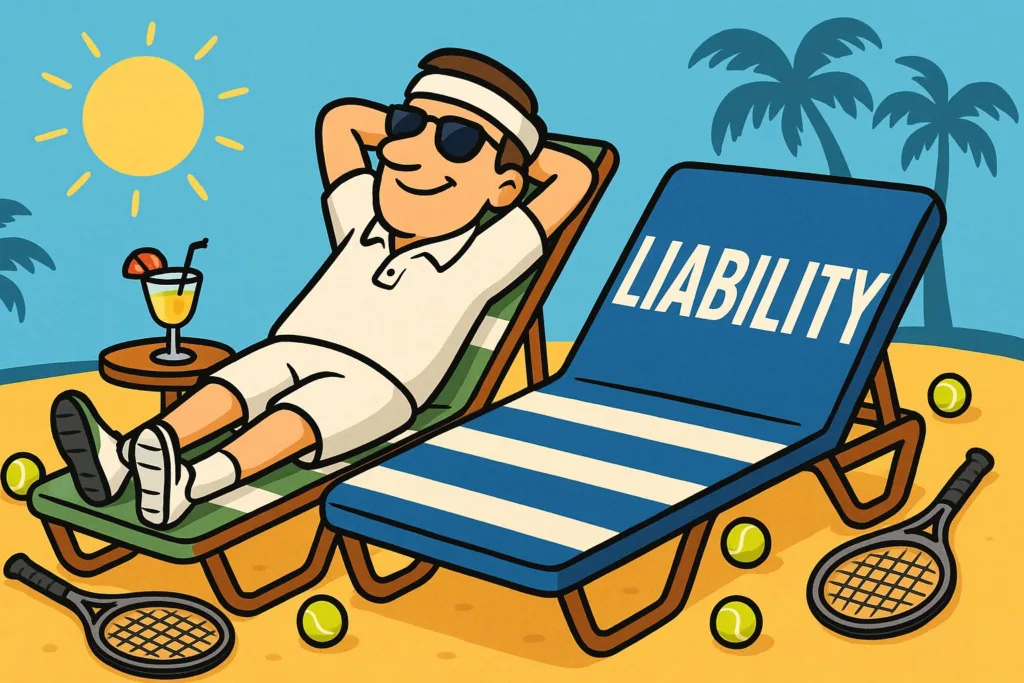
Why Laying by Liability Works So Well
What Does “Laying by Liability” Mean?
On Betfair you can lay a selection – effectively becoming the bookmaker and betting against it winning.
When you lay by liability you decide how much you are willing to lose first (your liability) and let the stake adjust automatically:
Stake = Liability ÷ (Lay Odds – 1)- If the selection wins, you lose exactly the liability you chose.
- If it loses, you win the stake (minus commission).
Your downside is capped, your upside is theoretically uncapped.
In Bet Angel, there is a specialist area for staking, and in that area, you nominate the lay by liability options.
Why It Suits Tennis Trading
Tennis gives us a clean two-outcome market (Player A vs Player B) with constant price movement during every match. That combination makes it perfect for:
- Quick price swings you can exploit during the match.
- Simple modelling – no draws or dead heats.
- High liquidity on Betfair (even Challengers are tradable at volume).
Because a tennis favourite can trade very short in-play (1.10 or lower) yet still lose, laying that favourite by liability offers handsome asymmetric payoff.
The Core Edge: Limited Loss, Open-Ended Profit
Your loss is fixed at the start; your profit isn’t.
Yes, laying 1.10 shots all day won’t mint you millions, but consider the illustration:
| Lay Odds | Stake (£) | Liability (£) | Profit If It Loses (£) | Comments |
|---|---|---|---|---|
| 1.12 | 892.86 | 100 | 892.86 | Heavy favourite – one injury timeout can flip the match. |
| 1.60 | 166.67 | 100 | 166.67 | Typical mid-match price on a set up favourite. |
| 3.00 | 50.00 | 100 | 50.00 | Underdog spikes short; still limited loss. |
Liability constant at £100. Commission ignored for clarity.
One upset at 1.12 wipes out almost nine losing lays at 3.00.
The “Two under Two” Tactic
During many lively tennis encounters the price on both players will dip below evens (2.0) at different moments as momentum swings back and forth. By laying each player once, whenever their price trades under the chosen threshold, and always staking by liability, you create a low-risk, high-upside straddle:
- Two under Two:
Lay Player A below 2.0 and lay Player B below 2.0 (total of two lays).
Why It Works
- Only one winner: No matter how many times the market flips, just one of your laid selections can beat you, so total downside ≈ one liability.
- Asymmetric payouts: Each successful lay returns a larger stake at shorter odds, while the liability stays constant.
- Built-in exit points: If the first player you lay goes on to win the match, you simply never place the second lay – worst-case red is already locked.
Live Illustration
| Moment | Player Laid | Lay Odds | Stake (£) | Liability (£) | Match Result | P&L (£) |
|---|---|---|---|---|---|---|
| 14:12 | Player A | 1.84 | 117.65 | 100 | Player A loses | +117.65 |
| 14:38 | Player B | 1.92 | 111.11 | 100 | Player B wins | –100.00 |
| Net | +17.65 |
Commission ignored for clarity; both lays risk the same £100 liability.
Had Player A closed the match out, you would have skipped the second lay altogether, capping the loss at £100.
This simple, mechanical routine exploits the natural ebb-and-flow of tennis prices, delivers two (or more) cheap shots at a payoff, and never lets a single freak comeback wreck your bankroll. Stick to your liability, track every trade, and let the maths grind in your favour.
How Laying by Liability Equalises Risk and Return
Because the stake shrinks as the odds lengthen, your expected profit per trade levels out:
- Short odds: Higher stake, higher chance of losing the lay, but bigger pay-off when you’re right.
- Longer odds: Smaller stake, lower chance of losing the lay, proportionally smaller pay-off.
This built-in hedge smooths your equity curve and keeps psychological drawdown tolerable.
Visual Snapshot
| Lay Odds | Stake (£) | Liability (£) | Return-to-Risk Ratio* |
|---|---|---|---|
| 1.50 | 200 | 100 | 2.00 |
| 2.00 | 100 | 100 | 1.00 |
| 3.00 | 50 | 100 | 0.50 |
*Return if selection loses ÷ Liability.
Notice how the ratio declines with price – your biggest absolute wins come from laying the shortest prices, exactly where tennis favourites often trade too short during momentum spikes.
Final Thought
Laying by liability is the professional’s way to think like an insurer. You decide your maximum exposure up front, then collect premiums every time the market over-rates a favourite. In tennis – where sentiment swings on every rally – that asymmetric structure is pure gold.
Deploy it with discipline, keep meticulous records, and let the maths compound.
